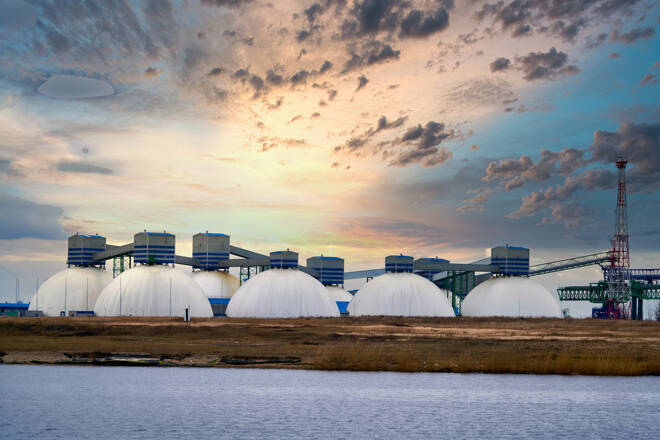Advertisement
Advertisement
Nat Gas: Supported by Lower Production Expectations
By:
On a daily basis, output was on track to drop about 2.3 bcf over the past two days to a preliminary 93.1 bcfd on Monday, its lowest since mid-March.
Natural gas futures are trading higher late in the session after recovering from an early session setback. Prices fell shortly after the pre-market opening on Monday in reaction to a general selloff in global commodities markets.
Nat gas prices rebounded about 1%, however, on expectations that recent declines in U.S. output will keep the amount of gas that utilities can inject into storage lower than usual in coming weeks.
At 16:33 GMT, June natural gas futures are trading $6.769, up 0.106 or +1.59%. The United States Natural Gas Fund ETF (UNG) is at $23.23, up $0.53 or +2.42%.
Surprisingly, the market is moving higher despite a drop in commodities, especially in global crude prices, which are down 5%, and forecasts for milder weather and less demand in the United States over the next two weeks than previously expected.
Weak Output Projections
Data provider Refinitiv said average gas output in the U.S. Lower 48 states rose to 94.4 billion cubic feet per day (bcfd) so far in April from 93.7 bcfd in March. That compares with a monthly record of 96.3 bcfd in December 2021, Reuters reported.
On a daily basis, however, output was on track to drop about 2.3 bcf over the past two days to a preliminary 93.1 bcfd on Monday, its lowest since mid-March. Most of those declines were in North Dakota. Keep in mind that preliminary data is often revised.
Gas Demand Expected to Slide
With milder weather coming, Refinitiv projected average U.S. gas demand, including exports, would slide from 92.4 bcfd this week to 90.5 bcfd next week, Reuters reported. Those forecasts were lower than Refinitiv’s outlook on Friday.
LNG Supply Issues Remain at Forefront
Reuters reported on Monday the amount of gas flowing to U.S. LNG export plants slid from a record 12.9 bcfd in March to 12.2 bcfd so far in April due mostly to declines at the Freeport LNG facility in Texas. The United States can turn about 13.2 bcfd of gas into LNG.
Since the United States will not be able to produce more LNG anytime soon, the country worked with allies to divert more LNG exports to Europe to help European Union countries and others break their dependence on Russian gas.
Russia, the world’s second biggest gas producer, provided about 30%-40% of Europe’s gas in 2021, totaling about 18.3 bcfd, according to Reuters.
The EU wants to cut Russian gas imports by two-thirds by the end of 2022 and refill stockpiles to 80% of capacity by November 1, 2022 and 90% by November 1 each year from 2023.
Short-Term Outlook
We could see a resumption of the uptrend following last week’s profit-taking induced setback. The catalyst will likely be the low U.S. production. However, gains could be capped by lower heating and cooling demand.
The major concern is if and when the U.S. will step up production. We’re not at the panic stage yet, but if it turns hot earlier than expected then prices could spike higher rather quickly.
For a look at all of today’s economic events, check out our economic calendar.
About the Author
James Hyerczykauthor
James Hyerczyk is a U.S. based seasoned technical analyst and educator with over 40 years of experience in market analysis and trading, specializing in chart patterns and price movement. He is the author of two books on technical analysis and has a background in both futures and stock markets.
Advertisement
